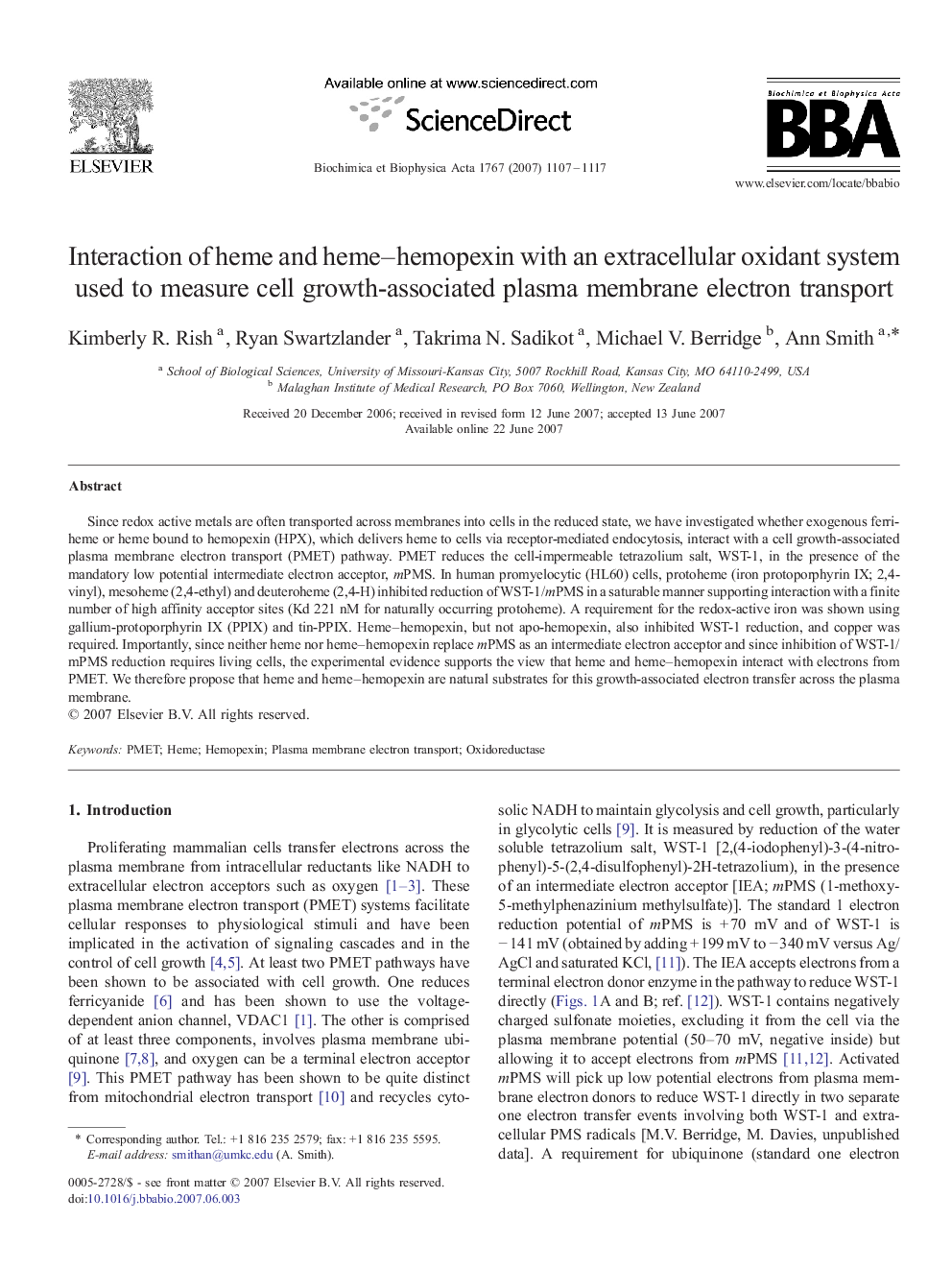| Article ID | Journal | Published Year | Pages | File Type |
|---|---|---|---|---|
| 1943492 | Biochimica et Biophysica Acta (BBA) - Bioenergetics | 2007 | 11 Pages |
Since redox active metals are often transported across membranes into cells in the reduced state, we have investigated whether exogenous ferri-heme or heme bound to hemopexin (HPX), which delivers heme to cells via receptor-mediated endocytosis, interact with a cell growth-associated plasma membrane electron transport (PMET) pathway. PMET reduces the cell-impermeable tetrazolium salt, WST-1, in the presence of the mandatory low potential intermediate electron acceptor, mPMS. In human promyelocytic (HL60) cells, protoheme (iron protoporphyrin IX; 2,4-vinyl), mesoheme (2,4-ethyl) and deuteroheme (2,4-H) inhibited reduction of WST-1/mPMS in a saturable manner supporting interaction with a finite number of high affinity acceptor sites (Kd 221 nM for naturally occurring protoheme). A requirement for the redox-active iron was shown using gallium-protoporphyrin IX (PPIX) and tin-PPIX. Heme–hemopexin, but not apo-hemopexin, also inhibited WST-1 reduction, and copper was required. Importantly, since neither heme nor heme–hemopexin replace mPMS as an intermediate electron acceptor and since inhibition of WST-1/mPMS reduction requires living cells, the experimental evidence supports the view that heme and heme–hemopexin interact with electrons from PMET. We therefore propose that heme and heme–hemopexin are natural substrates for this growth-associated electron transfer across the plasma membrane.
